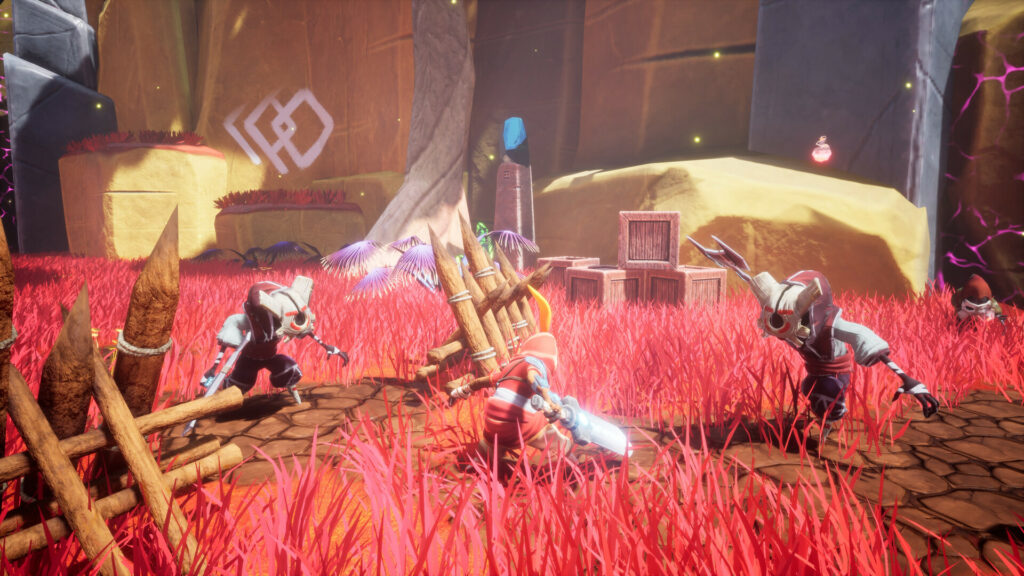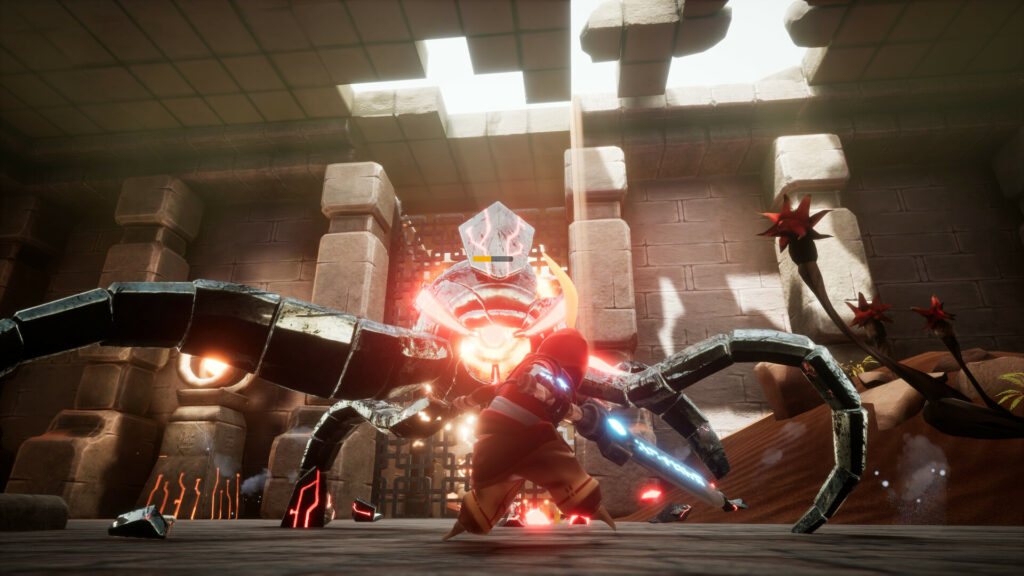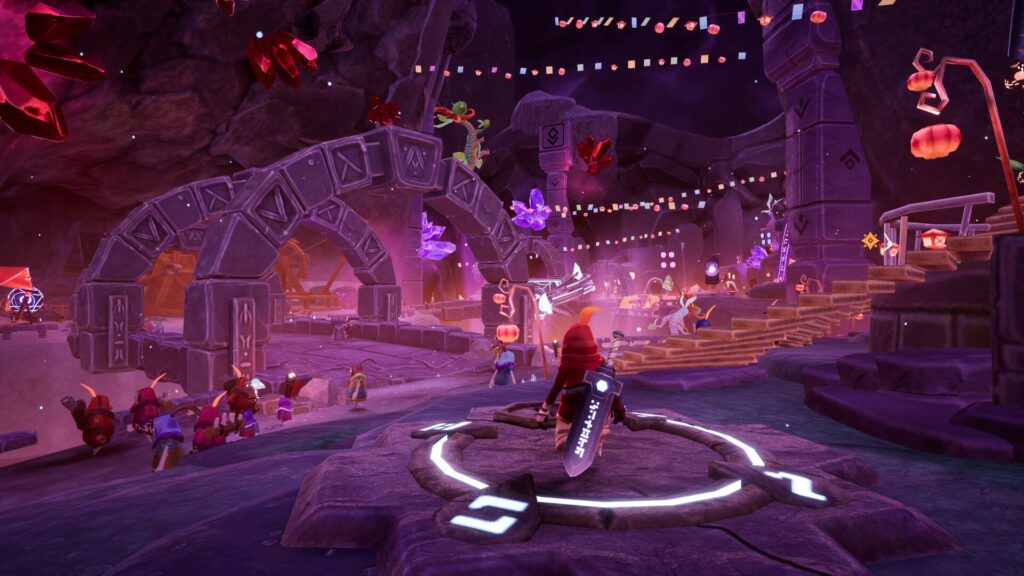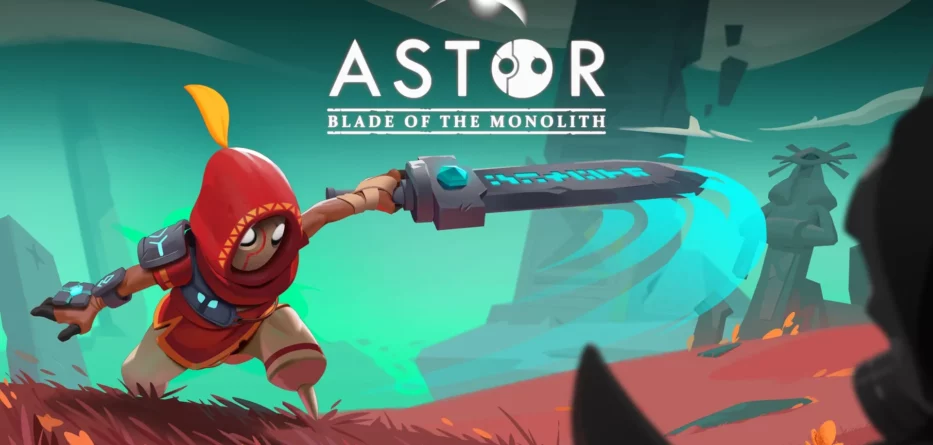If you didn’t grow up with a PS2 or a GameCube and want to know what games were like back in the early 2000s, look no further than Astor: Blade of the Monolith. I don’t think it was an intentional design decision by developer C2 Games Studio – it is evident that plenty of love and hard work has been put into it – but Astor: Blade of the Monolith is a janky (but nostalgic) experience from start to finish.
I wouldn’t describe Astor: Blade of the Monolith as broken because it’s entirely possible to complete – it just requires hours of ignoring inconveniences. Will Astor get stuck in a wall? Sure thing. Will Astor get trapped in a room after clearing it of enemies? Absolutely. Will Astor be facing the wrong way during a cutscene because you activated it from the wrong direction? Hilariously, yeah. All of these technical hiccups were common back in the day, and because it reminded me of my GameCube days I found it endearing.

Clipping into a wall or having to replay a level to escape it is as simple as restarting the game. I can’t stress enough how common this was 20 years ago, except it took ages to reboot your games back then. Astor: Blade of the Monolith, however, features level design that has been ripped straight out of my childhood.
For example, modern 3D action RPGs try to be open-world and try to keep the boundary of the world invisible – Hogwarts Legacy uses mountains; Fallen Atlas uses sandstorms – Astor: Blade of the Monolith uses an invisible boundary, and if you can’t imagine what one of those is, pretend you can see a field in front of you but you can never reach it because a transparent barrier is in your way – you’re doomed to endlessly tread on the spot, unable to get any further. Again, this isn’t a bad design choice but it’s another reason why this game feels old. Another reminder that Astor: Blade of the Monolith has time-travelled from 2003 is how players can’t freely explore the world to pick up collectables. If you forgot to pick something up or accidentally went the right way before exploring all of the optional side rooms, you will have to replay the whole level again. If you’re anything like me, it won’t be worth the hassle.

There are more serious design choices that are integral to the game but will have to be ignored. Astor can block attacks to counter them and can roll out of the way to dodge but because the animations are so delayed they’re not worth using. By the time you’ve pressed the corresponding trigger to defend yourself, Astor won’t respond until his current animation has finished – which, 9 out of 10 times, means Astor will keep on swinging his sword instead of defending himself. It’s not that countering and rolling don’t work because they do. If you’re not in the middle of a flourish of attacks and you’re circling your enemy waiting for a window, you’ll be able to pull it off (and this is perfect for boss fights, by the way). The reality though, is you’re swarmed by enemies most of the time, so taking the time to focus on one particular enemy honestly isn’t on the cards.
There are a few other issues, such as the navigation sprite not directing Astor to the correct location in the tutorial (this can likely be fixed with a patch), or how Astor randomly turned into Goku and kamehameha’d an entire room of enemies (I didn’t unlock this skill and it was impossible to replicate again, no matter how many buttons I held down). Astor can enter the Spirit World to boost his attack power and gain access to hidden platforms, doors, etc. but overall the Spirit World felt redundant (so much so, that it’s barely worth mentioning). Astor can even enter a Super-Saiyan mode (apologies for another DragonBall reference) which you will only use once because the game prompts you to. You will never use it again because 1.) It’s not noticeable what difference it makes and 2.) The game never explains what it is.

And speaking of Astor: Blade of the Monolith not explaining things, the game never tells you that you have a secondary pause menu that lets you access a map, quests and weapons. The map is entirely useless – it literally does nothing – so it’s not important. What is vital though, is figuring out how to equip new weapons. At no point does the game tell you how to equip Astor with his new toys. I can’t remember how I figured it out; most likely by randomly pressing all the buttons like a total lunatic. This secondary menu is also important when tracking quests because you can only track 2 quests at a time, so if you have more than 2 quests active, you have no way of knowing until you stumble upon this hidden secondary menu – obviously, by the time I discovered it I wasn’t going to complete any of the sidequests that the game decided to hide from me.
To boost me back up from that short, angry tirade about its inadequacies, let me wrap things up on a positive note. Astor: Blade of the Monolith is a completely playable game, and if that sounds like a mediocre conclusion that’s because it is. It doesn’t have any of the polish you’ve come to expect from modern games but that’s okay – it sent me back 20 years to a time when we didn’t have such high expectations; a time when rebooting a game to fix it was part of the fun; an era when games felt small and comforting. It’s not a breathtaking masterpiece by any means but Astor: Blade of the Monolith made me feel seen and I thoroughly appreciate how the game can act as a telescope to look back on the way things used to be.








